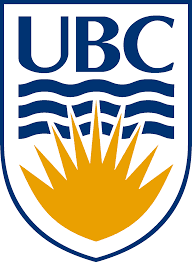Ganna (Anya) Portyankina was born in USSR and grew up in Ukraine. She studied physics and astronomy in Kharkiv National University where in 2000 she got Specialist degree (soviet equivalent to Master of Science). For the topic of her thesis Ganna picked dynamics of binary asteroids. Among hundreds of light curves of asteroids she had to find those that belong to binary systems rather than to single, often elongated, bodies. This is how for the first time she learnt the importance of data analysis for the modern planetary astronomy. After the graduation, Ganna accepted a year-long appointment as a junior researcher at the Kharkiv Astronomical Observatory. In early 2002 she moved to Germany to start working on her PhD in the frame of international PhD program in the Max Planck Institute for Solar System Research. For her doctorate Ganna worked on evolution of polar areas of Mars using data from Mars Orbiting Camera (MOC) of Mars Global Surveyor. Dr. Portyankina analyzed hundreds of MOC images of polar areas searching for clues of seasonal changes. She also worked with High Resolution Stereo Camera (HRSC) on board of European Mars Express and Venus Monitoring Camera (VMC) from Venus Express. In 2005 she defended her PhD in Göttingen University on the topic “Atmosphere-surface vapor exchange and ices in the Martian polar regions”. After the thesis defense she carried on with planning scientific operations for VMC, analysis of data from HRSC and started participating in the work of High Resolution Imaging Science Experiment (HiRISE) on board the Mars Reconnaissance Orbiter. From 2008 to 2012 Dr. Portyankina worked as a postdoctoral researcher in Bern University, Switzerland. From Nov. 2013 she is working as a Researcher at LASP, CU Boulder with UVIS/Cassini team.
"On martian ices, dust and winds: Planet4-Derived South Polar Martian Winds Interpreted Using Mesoscale Modeling" Seasonal fan-shaped deposits are routinely observed by HiRISE in the polar regions. They are widely accepted result from CO2 jet eruptions. Fan lengths, sizes, and shapes provide information about wind directions and strengths at the times such eruptions occur. We utilize a catalog of fan-shaped deposits markings produced by citizen scientists in the frame of the Planet Four (P4) project to analyze wind directions and speeds at 27 regions of interest (ROIs) for two springs of martian years 29 and 30. Fans change considerably from one HiRISE image to another at most of these ROIs. Thus, temporal variations in wind speeds and directions were retrieved. We have, for the first time, compared observed wind directions and speeds derived from P4 with near-surface winds predicted by a mesoscale atmospheric model (MRAMS) at the same ROIs. At most ROIs P4 wind directions are consistent with the winds from MRAMS, but the detailed level of consistency varies between different ROIs and at different portions of the spring at each ROI. This indicates influences of local and nearby larger-scale topography on the local wind patterns. The MRAMS and P4-derived wind speeds are less consistent with each other. The fact that the P4 observations and MRAMS wind directions match supports the hypothesis that fan formation is controlled by the wind, and not due to ballistic trajectories of material exiting an angled vent. HiRISE and P4 data provide unique and invaluable near-surface wind data for validating atmospheric modeling and quantitatively investigating Mars’ polar processes.
Please visit the following link for Anya's talk: https://www.youtube.com/watch?v=x9xh9-DkCWU







